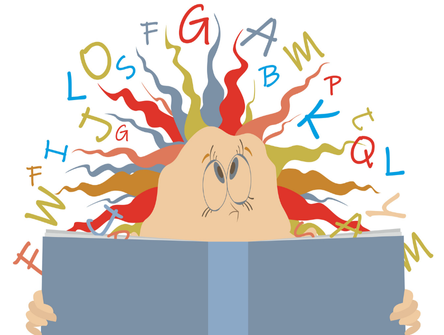One royalty for streaming
The Supreme Court of Canada confirms that authors can’t collect a separate royalty when online works are streamed or downloaded and establishes a new category of correctness review.

The Supreme Court of Canada ruled unanimously that the Copyright Board of Canada was in error when it determined that music streaming platforms were required to pay two royalties, whereas the same work offline only required paying one. But the court’s consensus broke down over the standard of review for such a case, with two justices writing a concurring decision that criticized the majority for inventing a new standard of correctness only three years after the decision in Vavilov.
The Copyright Board had decided that section 2.4 (1.1) of the Copyright Act meant that users had to pay a royalty for making works available and a second one tied to an actual download or streaming of the work. It had determined that this was the only interpretation that would fulfil Canada’s obligations under Article 8 of the 1996 WIPO Copyright Treaty.
The treaty requires member countries to give authors the exclusive right to control the act of making works available. The Federal Court of Appeal rejected that interpretation, and the Supreme Court of Canada has followed suit.
Writing for the majority, Justice Malcolm Rowe disagreed with the Board’s interpretation that the Act does not solely exist for the benefit of authors. Rather, it serves to balance authors’ and users’ rights. Rowe also disagreed with the interpretation of Article 8.
“The Board’s interpretation departs from the principle of technological neutrality,” Rowe wrote. “It requires that users pay additional royalties to access works online. Requiring that users pay additional royalties based on the mode of the work’s distribution violates the principles of technological neutrality and shifts the balance between users’ and authors’ rights that has underpinned the Copyright Act for decades decisively in favour of authors.”
Daniel Glover, a partner at McCarthy Tétrault in Toronto, who acted on behalf of Music Canada at the court, says there is something for many different constituencies to like in this decision.
“For rights-holders, there’s a confirmation that all rights of making available are solely protected online,” Glover says. “From a user perspective, some of the court’s earlier decisions on discouraging what is called double-dipping received some recognition. It is a case where the court recognized it was important to provide robust enforcement rights, that they could be used against unauthorized uses of copyright, while at the same time, at the Copyright Board level, there is some clarity as to who can claim what right.
Glover says it was a long journey from the Copyright Board’s decision to the Supreme Court’s finding, but they ended up in largely the same place, albeit with a difference in classification.
“Although there are different rights that protect a download and a stream, you get to the same conclusion, which is that if somebody puts up content online without authorization leading to infringement, there is a remedy for rights-holders under the Act,” Glover says. “That wasn’t clear from the Federal Court of Appeal’s decision—it’s crystal clear from the Supreme Court’s decision.”
Glover notes that on the internet, there many ways that rights-holders can lose control of their work simply by it being made available, which copyright law didn’t deal with adequately.
“The question before the Copyright Board, the Federal Court of Appeal, and the Supreme Court is, how do we implement that making-available right in Canadian law?” Glover says. “What the Copyright Board said was that you need to do it through the communication right, so the moment you post something online for consumption, whether it’s for stream, or download, or something else, that is part of the communication right under copyright law.”
Glover notes that the Federal Court of Appeal disagreed with that, so it went to the Supreme Court.
“This decision basically says if you make available a work for streaming, that is covered under the communication right, and if you make available a download, that is covered under two other rights—the reproduction right, and the authorization right,” says Glover. “Together, those rights provide what seems to be a totally comprehensive coverage of any act of making available.”
While this is not how the Copyright Board read it, Canada has wound up in a place where it is providing everything the WIPO treaty called on it to provide in terms of protection of copyright, Glover says.
As for the standard of review, there was an open question under Vavilov relating to a previous decision in Rogers, which stated that Copyright Board decisions interpreting the Copyright Act should be reviewed on a correctness basis. The reasoning was that they could not control whether an infringement case came before either the Board or a court, says Glover.
“Vavilov didn’t deal with that question, but under this decision, the majority of the court said in effect that Rogers was right, this was a new category of correctness under Vavilov, and it reaffirmed the reasoning that the court arrived at under Rogers,” Glover notes.
The concurring opinion, written by Justice Andromache Karakatsanis, and agreed to by Justice Sheilah Martin, stated that the majority in Vavilov chose not to recognize concurrent first instance jurisdiction.
“By creating a new correctness category only three years after a majority of the Court set out a comprehensive framework, my colleague’s conclusion undermines Vavilov’s promise of certainty and predictability,” Karatkatsanis wrote. “In my view, a faithful application of the Vavilov framework can only result in one conclusion—the standard of review in this case is reasonableness. Even so, the Copyright Board of Canada’s decision cannot be upheld.”
Paul Daly, the university research chair in administrative law and governance at the University of Ottawa, says it was an odd case for the Supreme Court to take up so soon after Vavilov.
“The Federal Court of Appeal’s analysis of the unreasonableness of the Copyright Board’s decision was convincing,” Daly says. “Standard of review of the Copyright Board is a niche issue, but fitting it into the Vavilov framework would not be especially easy. Now, having eliminated contextual analysis of standard of review in Vavilov, the Supreme Court has re-introduced contextual analysis.”
Daly says that lower courts have faithfully applied the Vavilov framework and set contextual factors aside since 2019. Still, counsel and courts are likely to take this decision as an invitation to rely on context to expand the domain of correctness review, which Vavilov had strictly confined.
“The parties agreed that the standard of review issue was correctness and no party put the case for reasonableness review,” Daly notes. “The Supreme Court might perhaps have appointed an amicus to address this point.
“I fear that taking this case may prove to have been more trouble than it was worth, as far as the standard of review is concerned, notwithstanding Justice Rowe’s valiant efforts to confine the breadth of his analysis to the realm of intellectual property,” Daly adds.


